This post is about concluding a list of the best Canon lens for portrait photography that is either specifically designed with portrait photography in mind or can capture portraits as one of their key features. But before we discuss these lenses, I recommend reading my post >> what’s a good lens for portraits<< to fully understand what factors we are looking for when choosing a lens for portrait photography.
In the following recommended list of portrait lenses, I include the DXOMark score and the lens metric score. The definitions of the scores are stated below.
DxOMark Score
The DxOMark Score reports average lens-camera performances over the whole focal length and aperture ranges. The DxOMark Score is reported using a gauge that shows the score itself as well as the range of scores over the focal range. With this gauge, photographers can view the homogeneity of the lens image quality over their focal range.
Lens Metric Scores (or Optical Metric Scores)
DxOMark reports lens performance Scores for five Lens Metrics, each having its own unit of measure: Sharpness (P-Mpix), Distortion (%), Vignetting (EV), Transmission (T-stop), Chromatic Aberration (µm scaled on a 24x36mm sensor).
- Sharpness
The DxOMark resolution score shows the sharpness performance of a lens-camera combination averaged over its entire focal length and aperture ranges.
- Distortion
To compute the distortion metric, we average the absolute value of the maximal distortion over the whole range of focal lengths (distortion being independent of aperture). The result is the DxOMark distortion score that we report.
Zooms usually have negative distortion (barrel) for short focal lengths and positive (pincushion) distortion for longer focal lengths. The metric penalizes both types of distortion. Distortion is expressed as a percentage: the value 0 is the perfect case; 1% is high, but there is no upper limit. A value of 0.2% corresponds to a noticeable distortion. Wide-angle lenses have more distortion.
- Vignetting
For each focal length, we only consider the widest possible aperture. We weigh the vignetting value in the field and tolerate a bit of vignetting in the corner. This yields a single value for each focal length. We average values over the whole range of focal length, and the result is the DxOMark vignetting score that we report. Vignetting is expressed in Exposure Value (EV) and is a negative number, as it describes a loss of exposure. No vignetting at all (0 EV) is perfect. Very wide aperture lenses are obviously more likely to show more vignetting (more than 2EV). Variations below 1/3 EV are barely noticeable.
- Transmission
For each focal length, we measure the T-stop at the largest possible aperture. We then obtain the transmission metric score by averaging over the whole range of focal lengths. T-stop has the same meaning as the lens f-stop and utilizes similar values. Best transmissions are attained for fixed focal lenses. Zooms cannot usually have very large apertures for long focal lengths. T-stop has an indirect impact on the image since it will usually change autoexposure behavior. A lower transmission can result in longer exposure times (and motion blur) or higher ISO sensitivity (and more noise). The variation below 10% will not be noticed.
- Chromatic aberrations
For each focal length and aperture, we first normalize (scale on a 24x36mm sensor) and weigh lateral chromatic aberration in the field, so as to tolerate a bit of aberration in the image corners. For each focal length, we select the largest value over the range of possible apertures and then average this value over the range of focal length. The result is the chromatic aberration metric score that we report.
Chromatic aberrations are expressed in micrometers (µm). The perfect value is 0; a value of 30 is very high, although there is no upper limit. A value of 5µm is noticeable and represents about 1 pixel for most cameras.
Best Canon Lens for Portrait Photography
Canon EF 85mm f/1.2L II USM
The EF 85mm f/1.2L II USM Lens from Canon is a fast, medium telephoto lens that delivers superb optical performance. A maximum aperture of f/1.2 makes it the professional’s choice for shooting without flash in low light conditions. The large aperture also provides fine control over depth of field for compelling portrait photography. A floating optical system and high precision aspherical lens element reduces aberrations and contributes to excellent imaging performance even at the maximum aperture. Super Spectra lens coatings minimize reflections, reducing flare and ghosting.
Retaining the impressive optical performance and large aperture of its predecessor, this lens has been improved with a ring-type ultrasonic autofocus motor (USM), high-speed CPU and optimized algorithms to achieve fast, smooth and quiet autofocus. Manual focus override enables precise manual focus at any time, even in AF mode. The truly circular aperture creates a shallow depth-of-field that brings attention to the subject and blurs the background, which is ideal for portraits. This L-series lens features weather-sealing to protect the lens from damage brought on by moisture and dust. Check the link for the full review of Canon EF 85mm f/1.2L II USM. A summary of its specifications is shown below.
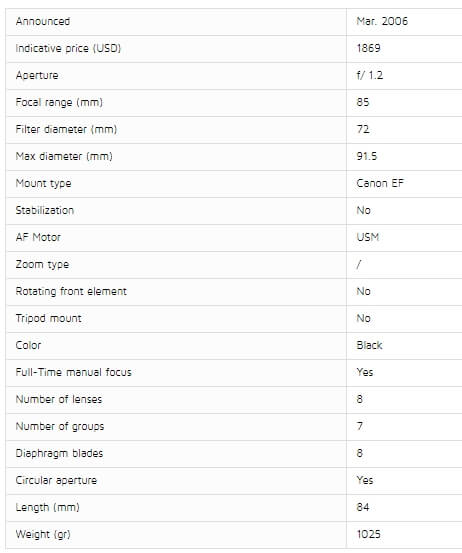
The DxOMark Score and Lens Metric Scores (or Optical Metric Scores) are shown below
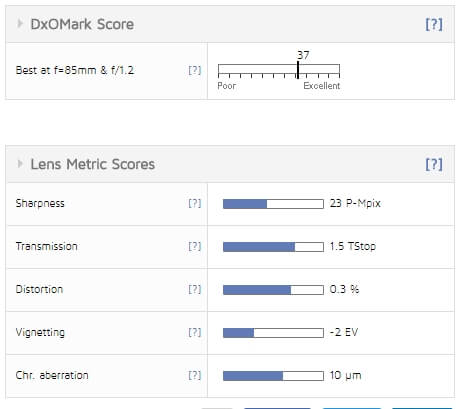
A sample photo of Canon EF 85mm f/1.2L II USM is shown below

Canon EF 100mm f/2.8L IS USM Macro Lens
The EF 100mm f/2.8L Macro IS USM Lens from Canon is the L-series version of Canon’s popular 100mm Macro lens. As an L-series lens, it offers the utmost in optical construction, including ultra-low dispersion lens elements and moisture and dustproof seal structure on the barrel. Its 100mm focal length is effective for portraiture and other telephoto applications and as a macro lens with 1:1 magnification and a 12″ minimum focus distance, it is ideal for life-size close-up imaging.
The lens features Hybrid Optical Image Stabilization with up to 4-stops of shake control for effective low light capture and with the vibration gyro and acceleration sensor it compensates for both angular and shift camera shake during close-up shooting. An ultrasonic focus motor (USM) provides quick and quiet auto-focusing and full-time manual focus override enables precise manual focus even in AF mode. A focus range limiting function offers three distance ranges to control the range in which the AF looks for focus, thus reducing focusing time. An internal focus system means that the barrel does not extend when focusing, which is crucial when shooting macro. A summary of its specifications is shown below.

The DxOMark Score and Lens Metric Scores (or Optical Metric Scores) are shown below
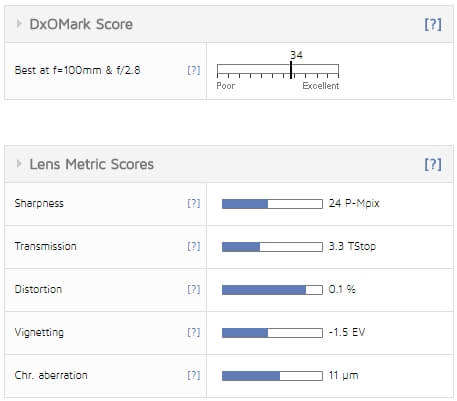
A sample photo of Canon EF 100mm f/2.8L IS USM Macro Lens is shown below

Canon EF 135mm f/2L USM
Ideal for portraiture, the EF 135mm f/2L USM is a medium telephoto prime and a member of Canon’s L-series of lenses. The long focal length coupled with the f/2 maximum aperture affords a great deal of control over depth of field for isolating subject matter and using selective focus, and the bright aperture also benefits shooting handheld in low-light conditions. In regard to the optical design, the lens uses two ultra-low dispersion elements to control chromatic aberrations and color fringing for high clarity, and a Super Spectra coating has also been applied to suppress flare and ghosting for increased contrast and color accuracy. Complementing the imaging attributes, a ring-type USM is employed to deliver quick and quiet autofocus performance along with full-time manual focus control. A summary of its specifications is shown below.

The DxOMark Score and Lens Metric Scores (or Optical Metric Scores) are shown below
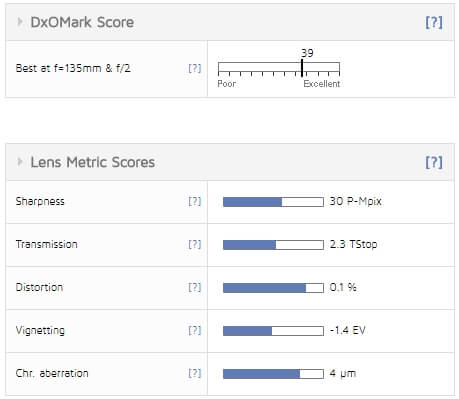
A sample photo of a Canon EF 135mm f/2L USM Lens is shown below

Canon EF 200mm f/2.8L II USM
The EF 200mm f/2.8L II USM Lens from Canon is an EF mount lens that employs a rear-focus telephoto optical design that delivers outstanding picture quality throughout its entire focusing range. This lens also uses two ultra-low dispersion glass elements to ensure maximum image sharpness and accurate color fidelity. Canon’s advanced ultrasonic autofocus motor (USM) and rear focusing design provide silent, smooth high speed autofocusing. Manual focus override allows you to fine-tune focus in autofocus mode and focusing range limiter lets you adjust the range of focus to ensure faster autofocus speeds. Its minimum focus distance is 4.9′. A summary of its specifications is shown below.

The DxOMark Score and Lens Metric Scores (or Optical Metric Scores) are shown below
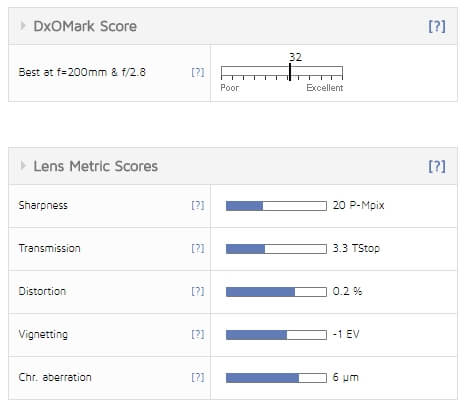
Sample photo by Junnn

Canon EF 24-70mm f/2.8L II USM
This redesigned EF 24-70mm f/2.8L II USM Lens from Canon ups the ante for optical performance for a professional standard zoom lens. It has one Super UD lens element and two UD lens elements that minimize chromatic aberrations in the periphery at wide-angle, as well as reducing color blurring around the edges of the subject. In addition, two types of aspherical lenses are combined to help reduce spherical aberration over the entire image area, as well as through the full zoom range. Optimized lens coatings help ensure exceptional color balance while minimizing ghosting.
A ring-type USM and high-speed CPU with optimized AF algorithms ensure silent, fast autofocusing. The lens is constructed with improved dust sealing and water resistance, while fluorine coatings on the front and rear lens reduce fingerprints and smearing. A circular 9-blade diaphragm gives beautiful, soft backgrounds. A zoom lock lever locks the zoom position at the wide end for safe transporting while attached to an EOS DSLR camera over the shoulder. Check the link for the full review of Canon EF 24-70mm f/2.8L II USM. A summary of its specifications is shown below.
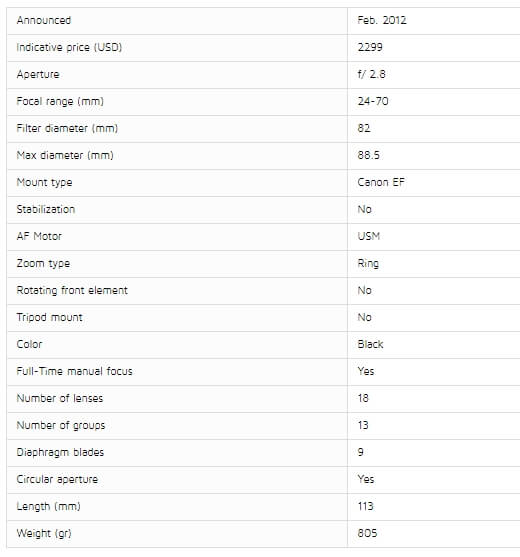
The DxOMark Score and Lens Metric Scores (or Optical Metric Scores) are shown below
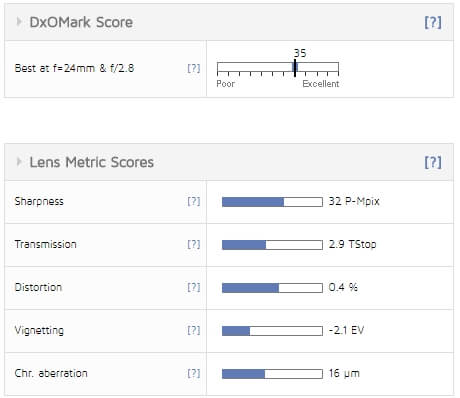
Sample Photo by eblaser

Canon EF 70-200mm f/2.8L IS II USM
The EF 70-200mm f/2.8L IS II USM Lens from Canon improves upon its predecessor, one of the most acclaimed lenses in the Canon EF line, with superior performance, increased speed and optical quality.
This lens construction consists of one fluorite and five ultra-low dispersion optical elements that help deliver the sharpness and reduced aberrations. The IS II Optical Image Stabilizer provides up to 4 stops of correction at all focal lengths and features two modes for stabilization of still objects and while panning to follow moving subjects. An ultrasonic focusing motor provides fast, smooth and silent autofocus action.
This lens has a minimum focusing distance of 3.9′ (1.2m) at all zoom settings so you can shoot close to your subject even in smaller spaces. Like all Canon L-series lenses, this telephoto zoom is dust and moisture resistant and designed to keep on going even in the most challenging of environments. A summary of its specifications is shown below.
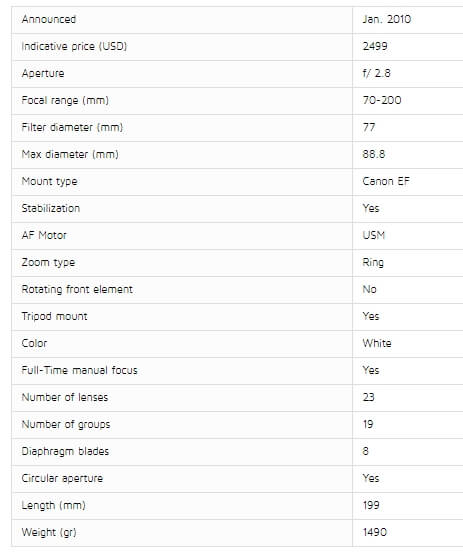
The DxOMark Score and Lens Metric Scores (or Optical Metric Scores) are shown below
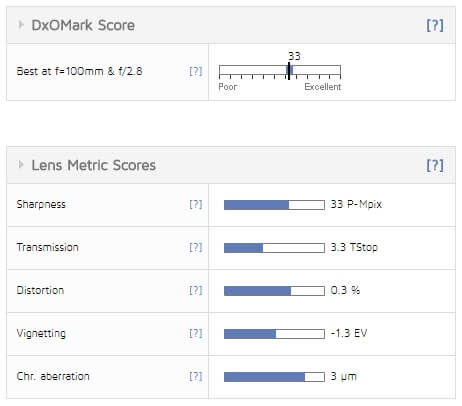 Sample photo by ejancys
Sample photo by ejancys

Related posts
What is a good lens for portraits
Best Lens for Portrait Photography-Third party lenses
Thanks for reading, I hope you enjoyed the article if you have any questions just post below & I will be happy to answer you.
If you enjoy the site, don’t forget to subscribe, we will only inform you when a new article is posted.

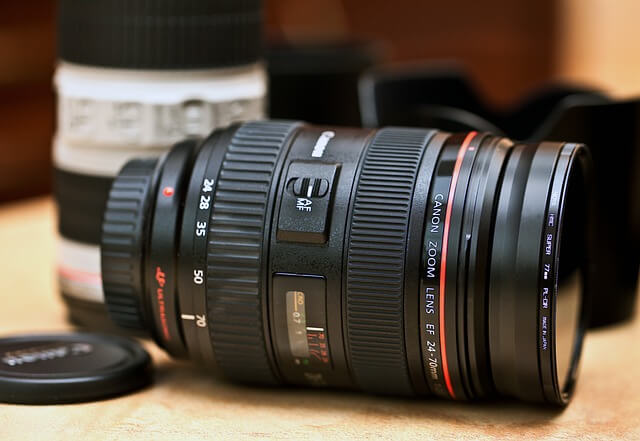


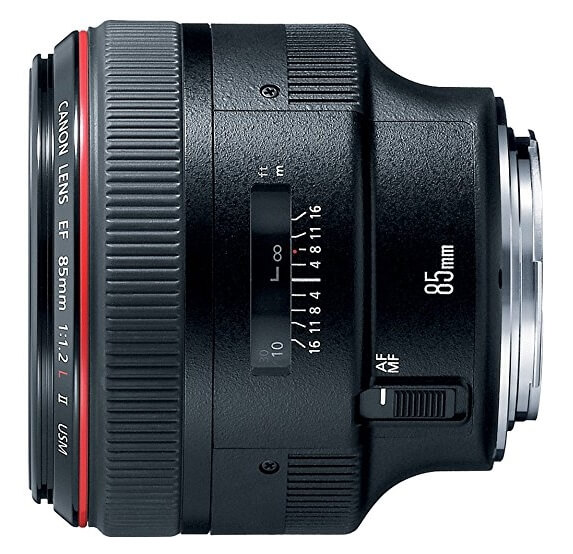
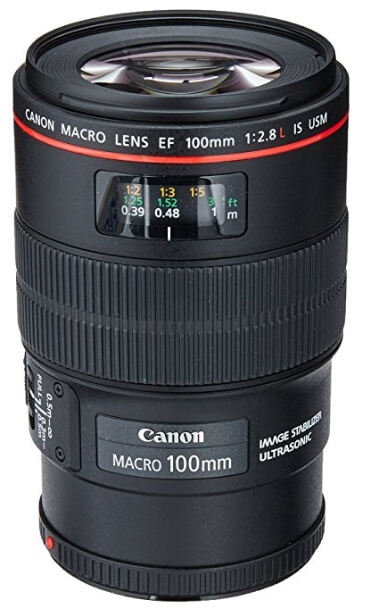
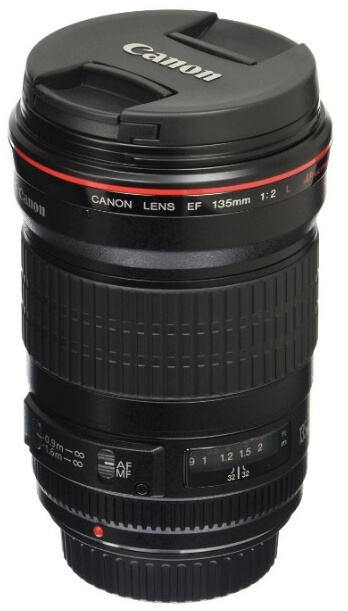
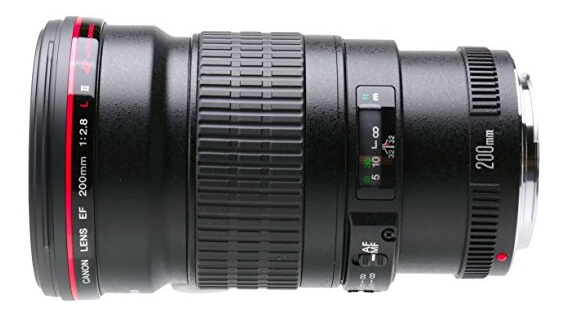
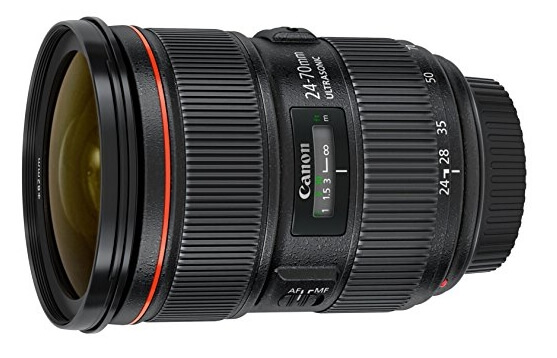
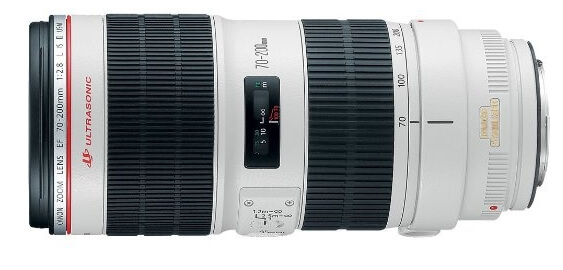

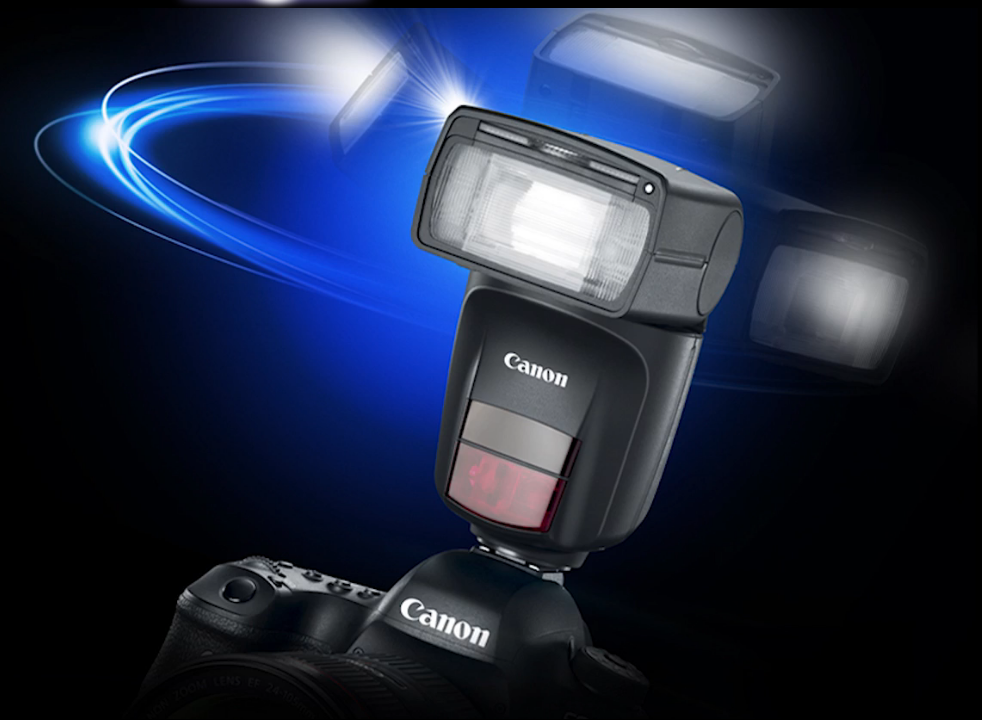
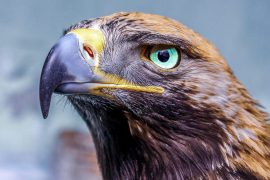


Great post. Thanks for sharing
Hello, it’s a nice article about canon lens for portrait photography, but I think I need a little guidance here. I want to search a gift for my weeding photographer friend, so I’m quite sure he will deal with portrait photography a lot. He specializes in outdoor photography.
What measurement or metric that I should pay attention when choosing among above lenses? I appreciate it if you can explain in simple commoner term. Thank you for your help (oh, and I should recommend your website to my friend. He must like yours)
Wedding photography is unique in that it encompasses several genres of photography, so you need more than one lens. I suggest a prime lens 50 mm f/1.4 and telephoto lens 70-200 f/2.8
Thanks for the comment